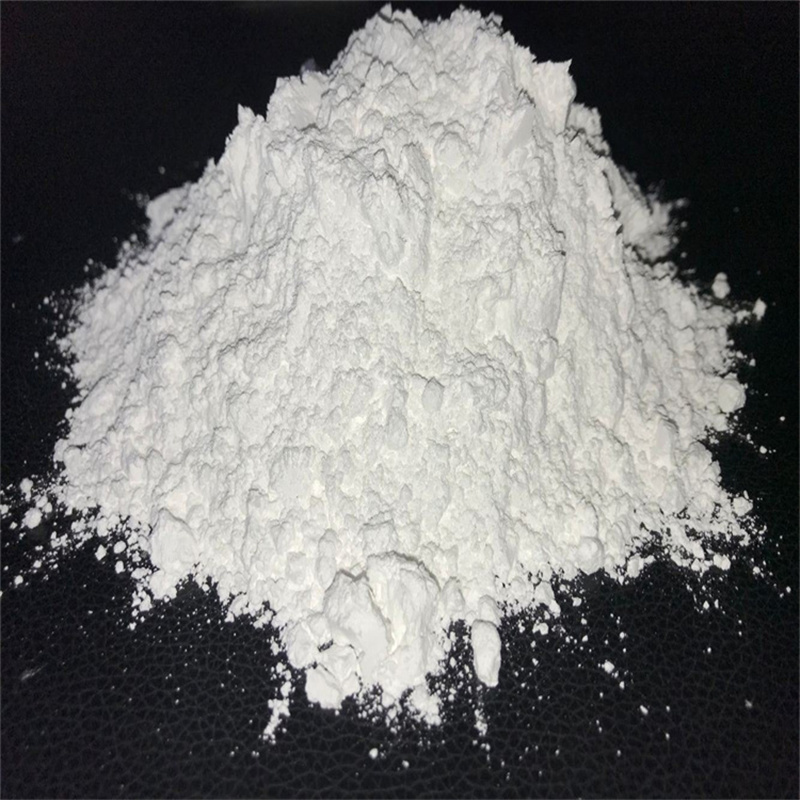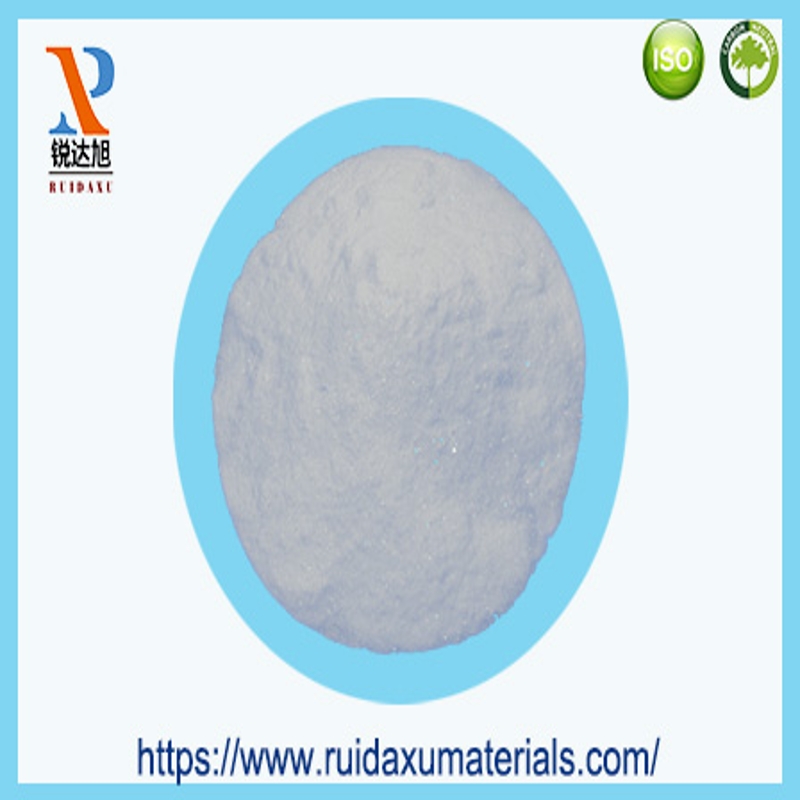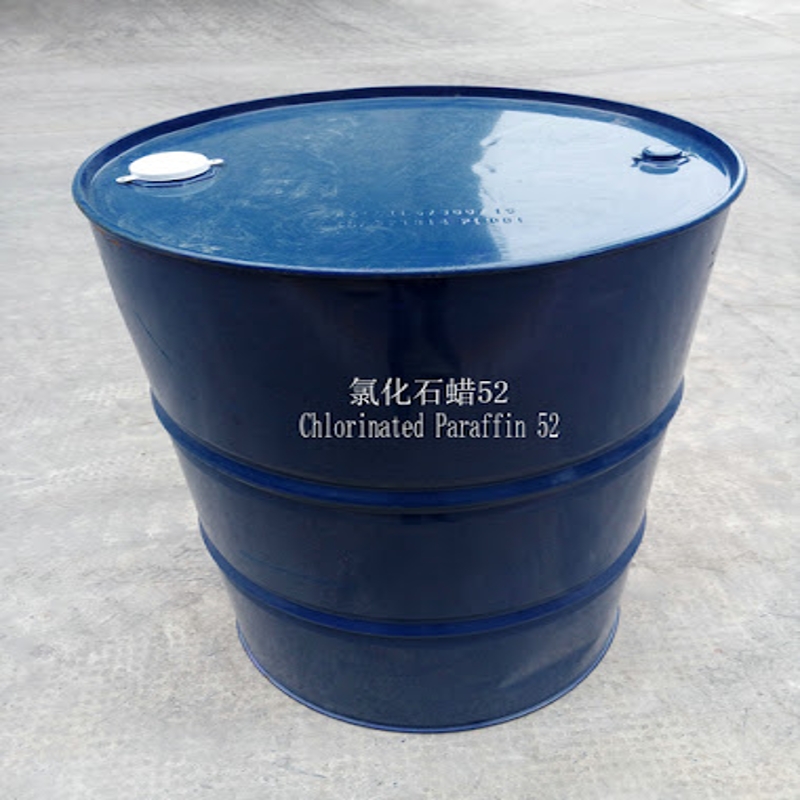-
Categories
-
Pharmaceutical Intermediates
-
Active Pharmaceutical Ingredients
-
Food Additives
- Industrial Coatings
- Agrochemicals
- Dyes and Pigments
- Surfactant
- Flavors and Fragrances
- Chemical Reagents
- Catalyst and Auxiliary
- Natural Products
- Inorganic Chemistry
-
Organic Chemistry
-
Biochemical Engineering
- Analytical Chemistry
-
Cosmetic Ingredient
- Water Treatment Chemical
-
Pharmaceutical Intermediates
Promotion
ECHEMI Mall
Wholesale
Weekly Price
Exhibition
News
-
Trade Service
,。,。,,、ALTIRIS® 550、,com" href="">coatingol.
com。
:;;;
The development of green buildings has become the focus of current building energy conservation and consumption reduction work, and the development of green buildings is inseparable from the application of energy conservation, environmental protection, and green products.
In recent years, as a new functional architectural coating, architectural reflective insulation coatings can effectively reduce the accumulation of solar radiant heat on the exterior walls or roofs of buildings when applied to the exterior walls or roofs of buildings, and reduce the passage of building walls in summer.
The heat transferred from the body or roof to the room can reduce the energy consumption of the air conditioner and improve the comfort of the indoor environment.
Test part
Main raw materials
Protective glue GS, Shanghai Grid International Trade Co.
, Ltd.
; reflective insulation titanium dioxide ALTIRIS® 550, Huntsman Chemical; rutile titanium dioxide 902+, DuPont; reflective insulation colored sand, Jiangyin Cailin; hollow glass microspheres 20- 30μm, Akzo Nobel; Cellulose 250HBR, Ashland; Deionized water, additives, etc.
Major equipment
SFJ-400 frequency conversion disperser, SSR-ER solar spectrum reflectance meter, Datacolor200M spectrophotometer, W77 colorful spray gun, GFX blast drying oven, water-in-water granulator, AE1/RD1 emissivity meter, electronic scale
Preparation of reflective and heat-insulating water-in-water colorful paint
Preparation of protective glue solution
The composition of the reinforcement solution is shown in Table 1.
Table 1 »Reinforcement fluid formula
The composition of the granulation solution is shown in Table 2.
Table 2 »The formula of granulating liquid
Add the weighed deionized water into the dispersing container, and adjust the speed of the disperser to 400-500 rpm.
Slowly add the weighed GS powder to the dispersing container, and continuously increase the speed of the disperser to 1500-1800 rpm, and disperse for 50-60 minutes to prepare the reinforcement solution and the granulation solution, which are reserved for future use.
Preparation of base paint
The formula of the tinting base paint is shown in Table 3.
Table 3 »Formula of base paint
Add the weighed deionized water into the dispersing container, turn the speed of the dispersant to 400-600rpm, add titanium dioxide 550, cellulose, dispersant, AMP-95, defoamer in turn according to the formula ratio.
Increase the speed of the dispersant to 1300-1800rpm, and disperse at high speed for 15-20min.
After the test slurry fineness is less than 50μm, reduce the speed of the disperser to 800-1000rpm, add emulsion, Texanol, propylene glycol, defoamer, and preservative in sequence, disperse for 5-10min, finally add reinforcement solution, disperse for about 10min, and make the foundation The paint is reserved for future use.
Preparation of continuous phase
The continuous phase formula is shown in Table 4.
Table 4 »Formulation of continuous phase
Adjust the speed of the disperser to 300-500rpm, and add the raw materials of each component in sequence according to the formula ratio.
When adding the thickener, increase the speed of the disperser to 700-1000 rpm according to the actual viscosity change, and prepare a continuous phase after 5 minutes of dispersion.
Preparation of reflective and heat-insulating water-in-water products
See Table 5 for the formula of reflective and heat-insulating water-in-water colorful products.
Table 5 »The formula of the reflective insulation water-in-water finished product
According to the formula ratio, add the granulating liquid first, and then add the color points of the adjusted color.
Pre-cut and then use a granulator for sieving and granulation to obtain colorful dots of appropriate size.
Then add the continuous phase emulsion according to the formula ratio, use a four-blade paddle 40-150rpm low-speed stirring for mixing, finally use a thickener to adjust the finished product to a suitable viscosity, and stir for 5 minutes to prepare a reflective and heat-insulating water-in-water colorful finished paint.
Test sample paint film preparation
The tests are all carried out on aluminum plates, and the film forming method is in accordance with JG/T235-2014.
First use a 200μm wire rod to scrape the matching middle layer paint on the aluminum plate, scrape coating 2 times.
After the middle coat is dry, use the colorful special spray gun to spray the reflective and heat-insulating water-in-water paint.
Results and discussion
Construction application experiment comparison
Reflective heat insulation water-in-water is a modeling coating imitating marble and granite.
Its color and effect are not uniform, and its construction will affect the color and overall effect of the paint film, thereby affecting its reflection and heat insulation performance.
Here we discuss and study the construction consumption and whether the finish varnish will affect its reflection and heat insulation performance.
Use the main material of reflective insulation water-in-water close to the L* value of the middle layer paint, see Table 6, respectively, compare 0-0.
7kg/m2, and compare the construction consumption to the near-infrared reflectance (NIR) and sunlight reflectance of the coating (TSR), hemispherical emissivity.
The results are shown in Table 7, Figure 1.
Table 6 »Proportion of each color point of reflective and heat-insulating water-in-water
Note: Make the multi-color product into a film L*=75, NIR=0.
82, TSR=0.
63, hemispherical emissivity=0.
93
Table 7 »Comparison of reflective insulation performance under different construction consumption
Note: The hemispherical emissivity and TSR meet the requirements of national standards, and the NIR needs to be greater than L*/100 to meet the requirements of the JG/T235-2014 standard.
Figure 1 »The effect of different titanium dioxide and its dosage on visible light reflectance in the case of similar colors
Note: The colors of the samples are similar, and the L* is around 60.
So when TSR>0.
4, NIR>0.
6, hemispherical emissivity>0.
85 is qualified
The data shows that since the middle layer paint and the reflective insulation water-in-water main material L* are relatively close, with the increase in construction consumption, the TSR of the coating remains basically unchanged, and both meet the TSR requirements of JG/T235-2014.
This is Because TSR is mainly determined by the color of the coating itself, the construction consumption does not affect the TSR and hemispherical emissivity of the coating.
When the construction consumption is 0 (water-in-water colorful without construction), the NIR performance of the middle layer paint does not meet the standard requirements.
However, as the construction consumption increases, the coating NIR will increase significantly.
When the construction consumption is greater than or equal to 0.
6kg/m2, the NIR remains basically unchanged, because when the construction consumption reaches 0.
6kg/m2, the reflective barrier The water-in-hot water has completely covered the middle-layer paint, and the test data are all data of reflective and heat-insulating water-in-water, and are no longer affected by the middle-layer paint.
Therefore, in the following experimental tests, the construction consumption is 0.
6kg/m2 for testing.
The effect of the type and amount of colorant on the reflective and thermal insulation performance of water-in-water reflective insulation
The toning of the paint is achieved by adding pigments to the white or low-hiding paint, and the main performance of the paint color depends on the performance and content of the pigment used.
Except for titanium dioxide (TiO2), traditional inorganic pigments and organic pigments have a greater impact on the heat reflection performance of coatings, so most traditional pigments are not suitable for use in color heat reflective insulation coating systems.
Cold pigments generally refer to a type of pigments with high solar reflectance, good weather resistance, and excellent chemical stability.
Most of the cold pigments are composed of several metal mixtures after being calcined at high temperatures (above 800°C), and their main components are composite inorganics, so they are also called composite inorganic pigments.
For a good cold pigment, how to improve its own near-infrared reflectance under the premise of ensuring its tinting strength has become the key to manufacturing.
Especially the coating applied to the exterior wall of the building not only must ensure its own excellent weather resistance and temperature resistance, but also have the ability of reflection and heat insulation.
The Lawrence Berkeley National Laboratory (LBNL) in the United States classified the pigments into strong, medium and weak near-infrared scattering pigments according to the backscattering test results of the near-infrared pigments.
The specific classifications are shown in Table 8.
It can be seen from Table 8 that most of the cold pigments are strong, mid-near infrared scattering pigments.
Table 8 »Classification of near-infrared backscattering capabilities of pigments
Since this test is mainly for colorful paints, the color point toning of colorful paints is relatively simple.
In actual use, iron red, iron yellow, and carbon black can basically meet the color matching needs, so this experiment mainly focuses on iron red, iron yellow, and carbon.
Black come to test.
Use Clariant Chemical N131-CN black, 100-CN red, 130-CN yellow and other three common color pastes, which are compatible with IR-R1 0 0-CN yellow, IR-G1 0 0-CN red, and IR100-CN black.
Three treated cold reflective heat-insulating pigments were tested for comparison.
The colored dots of the adjusted color are separately granulated to produce a single-color dot reflective heat-insulating water-in-water paint, and sprayed with a construction consumption of 0.
6kg/㎡.
The latex paint with a color similar to that of the reflective and heat-insulating water-in-water paint was selected as the background paint in the middle of the test.
The reflectance of visible light was compared and tested, and the results are shown in Table 9, Table 10, and Table 11.
Table 9 »Comparison test of black colorant
Table 10 »Comparison test of red colorant
Table 11 »Comparison test of yellow colorant
Combining Table 9, Table 10, and Table 11, it can be seen that after using 1% carbon black to color, the NIR and TSR values are already very low, because carbon black has a strong absorption of all sunlight, resulting in almost no reflection of the entire coating.
Thermal performance, so charcoal black paste cannot be used in reflective insulation systems.
When the amount of color paste (normal carbon black, iron yellow, iron red paste and reflective insulation black, yellow, red paste) is added to 4%, the color dots cannot be granulated normally and become a paste.
This is because of the color A large amount of dispersing wetting agent will be added to the pulp during the grinding process.
If the content of the wetting and dispersing agent in the colorful base paint is too high, it will affect the encapsulation of the protective glue on the color dots, and the color dots cannot be granulated normally and become a paste.
Therefore, the additive amount of color paste is 3% at most.
It can be seen from the table that when the ordinary color paste is used for toning, its NIR value is only slightly larger than its L*/100.
When the reflective and heat-insulating color paste is used for toning, its NIR value will be much higher than its L*/100.
.
The higher the NIR value, the higher the near-infrared reflectivity and the better its reflection and heat insulation performance.
The effect of the type and amount of titanium dioxide on the reflective and thermal insulation performance of water-in-water reflection
Pigments and fillers are the main material for reflection and heat insulation.
Titanium dioxide is the best infrared reflective pigment, and it is also the main filler material in water-in-water colorful coatings.
The reflection efficiency of titanium dioxide to visible light will affect the reflection performance of the entire water-in-water coating to visible light.
Therefore, in the reflective thermal insulation coating system, the type and amount of titanium dioxide is the most important part of the formulation design.
Under the condition that the construction consumption is 0.
6kg/m2 and the reflective and heat-insulating color paste is used for color mixing, compare and test the reflectance of DuPont 902+ and Huntsman ALTIRIS550 with different dosages to visible light.
The results are shown in the table 12.
Table 13, Figure 1.
Table 12 »The effect of different titanium dioxide and the amount on the reflective and thermal insulation performance under the same colorant dosage
Note: The above test samples are added with 1% IR-G 100-CN red,
1% IR-R 100-CN yellow, 1% IR 100-CN black for color adjustment.
Table 13 »The effect of different titanium dioxide and its dosage on the reflective and thermal insulation performance in the case of similar colors
It can be seen from Table 13 that in the case of the same amount of colorant, the L* value of 902+ ordinary titanium dioxide is much higher than that of ALTIRIS® 550 titanium dioxide.
It can be concluded that the decolorizing ability of general 902+ on pigments is higher than that of ALTIRIS.
® 550, but the use of 902+ coating does not meet the requirements of JG/T235-2014 for near-infrared reflection, and the test fails.
The coating using ALTIRIS® 550 can meet the requirements of JG/T235-2014 when the dosage reaches 5%, and the test passes.
It can be seen from Table 10 that when we fix the color and add 3%-8% of 902+, the NIR value of the coating is low and does not meet the requirements.
It can be seen that 902+ has poor reflectivity for near-infrared light.
, Does not meet the requirements of JG/T235-2014 standard, so 902+ is not suitable for use in reflective insulation water-in-water systems.
When the amount of ALTIRIS® 550 is less than 3%, its reflection and heat insulation performance is not ideal, and the NIR test data of the coating is slightly lower than L*/100, which does not meet the requirements of JG/T235-2014.
When the addition amount is 5%, the NIR test data of the coating is slightly higher than L*/100.
Although the product meets the requirements of the JG/T235-2014 standard, the formula tolerance is poor.
When the addition amount is 8%, the coating NIR test data is much higher than L*/100, and the formulation latitude is better.
When the addition amount is 10%, the coating NIR test data is closer to the addition amount of 8% .
Therefore, when the addition amount of ALTIRIS® 550 is 5%-8%, it is sufficient.
Conclusion
1.
When the reflective and heat-insulating water-in-water colorful paint reaches a certain coverage rate on the middle layer paint that does not have reflective and heat-insulating properties (after the construction consumption is greater than or equal to 0.
6kg/m2), the NIR remains basically unchanged, because when After the construction consumption reaches 0.
6kg/m2, the main material of reflective insulation water-in-water has completely covered the middle layer paint, and the test data are all data of reflective insulation water-in-water, which is no longer affected by the middle layer paint.
2.
Ordinary carbon black paste has a great influence on near-infrared reflection and sunlight reflection.
Even if only 1% content is added, the value of NIR and TSR is close to 0.
Therefore, it is not recommended to add ordinary carbon black paste for adjustment in reflective insulation.
color.
3.
Compared with ordinary iron red and iron yellow pastes, reflective heat insulation red and yellow pastes have higher reflectivity to near-infrared light, which will greatly help the improvement of reflective heat insulation performance.
However, if the color tone of the reflective heat-insulating color paste does not achieve the desired effect, you can try to use ordinary color pastes to make the reflective heat-insulating water-in-water not only a good decorative effect, but also excellent reflection and heat insulation performance.
4.
When the amount of color paste added is too large (>4%), the color dot granulation will appear paste, so it is not recommended to add too much color paste to the multi-color base paint.
5.
Using DuPont 902+ titanium dioxide as a filler, no matter it is the same amount of color paste or similar colors, the reflective and thermal insulation performance of finished water-in-water coatings is significantly weaker than that of Huntsman ALTIRIS® 550 reflective insulation.
Hot titanium dioxide.
6.
Using ALTIRIS® 550 titanium dioxide as a filler, when the addition amount is 5-8%, the reflective and thermal insulation performance of the water-in-water colorful paint can meet the requirements.







